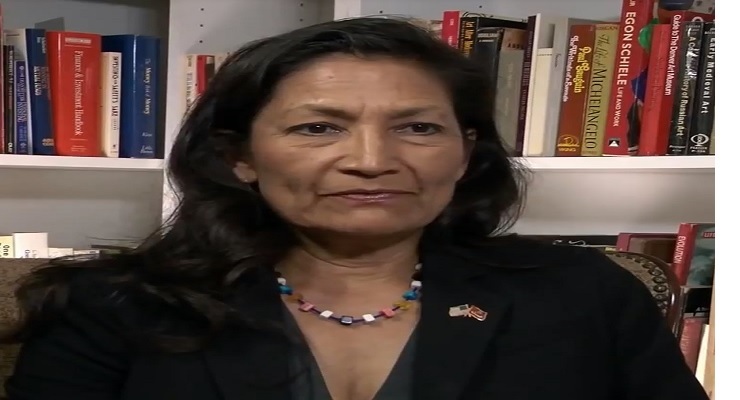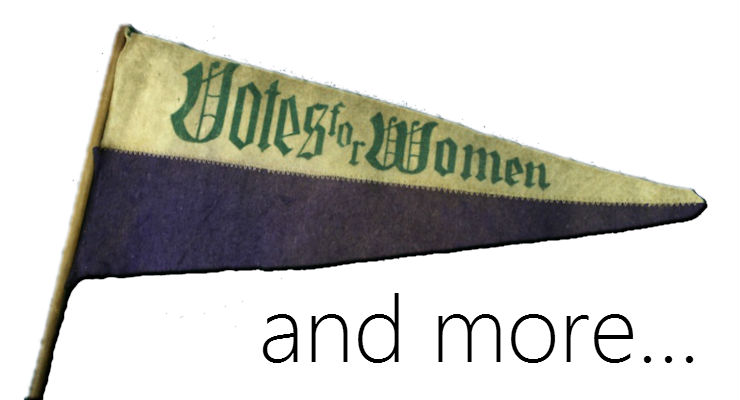
Debra Haaland is running for Congress.
She’s among a record number of American women who are running — or running again — for political office at all levels of government in Tuesday’s midterm election. Most of those candidates are Democrats, and they are receiving the lion’s share of campaign contributions. But female candidates from both parties have found that they have a harder time raising money than men. Consequently, they have had to be innovative and creative in fundraising.
Haaland is the Democratic nominee in New Mexico’s 1st Congressional District, located in the north-central area of the state. She is a member of the Laguna Pueblo, hoping to make history as the first Native American woman in Congress.
While she’s been actively involved in Democratic politics for more than two decades, including service as the New Mexico state Democratic Party chair, this is the first time she is running for public office. And she is favored to win.
Haaland entered the race fully aware that running a campaign takes money.
“When you first start a campaign for Congress, it’s like a series of concentric circles,” she explained in an interview with VOA. “So, I started with my friends and family, those are people that know me and trust me, and then you graduate to acquaintances, people you went to school with, people that you’ve known through work. And so, that’s how I initially got started.”
Deb for Congress
That was in 2017. Haaland has been able to meet all her financial goals every quarter since then, thanks to lots of small grassroots contributions.
“I have a lot of donors who will donate $3, $5, $10 apiece,” she said.
Those donations come in through the internet, regular mail and at fundraising events such as private dinners hosted by friends and supporters in their homes.
The most recent Federal Election Commission records show that between April 1, 2017, and Oct. 17, 2018, Haaland’s campaign received $1,909,373 in total contributions.
Her opponent, Republican Janice Arnold-Jones, received $282,471 in contributions through Oct.17.
Much of Haaland’s donations go toward funding the many expenses associated with running a campaign, such as creating and airing television ads, travel, mailings, signs, staff salaries and maintaining her Albuquerque campaign headquarters.
Haaland also has a strong social media presence.
“We’re on Twitter. We’re on Instagram. We’re on Facebook, of course. And then we send out regular emails, and some of those are fundraising emails where we ask people to donate before the end of the quarter,” she said.
Building relationships
Haaland says her most powerful fundraising tool is her telephone. She’s used it to call “thousands and thousands of donors and voters alike, to talk about my campaign.”
“I feel confident that folks need to hear directly from me,” she said. “I have called some people who have said, ‘I’ve never, ever been called by a candidate. Thank you for calling me. I’m so happy to hear from you.’ That’s the way I build relationships with people.”
That includes outreach to the Native American community.
“We decided early on that considering that I would be the first Native American woman in Congress, that I should work hard to engage Indian tribes in my fundraising,” she said. “So, we said we wanted to build a national tribal network from the start.”
Over the past year and a half, Haaland and her team have been reaching out to tribes by attending meetings and working with them in other ways to help her campaign.
More money for Dems
While Haaland doesn’t accept money from corporate political action committees, she does accept contributions from Democratic fundraising organizations such as EMILY’s List (an acronym for Early Money Is Like Yeast, meaning it helps raise “dough”) that collect money from individual donors who are interested in a specific issue.
“These [donors to EMILY’s List] are pro-choice voters who want to see more women in office,” said Sarah Bryner, research director for the Center for Responsive Politics, a nonpartisan, nonprofit organization in Washington. “They say, ‘I don’t really care who this money goes to, you guys can decide. I’m going to give you $500, and you distribute it to the candidates that need it the most.’”
Bryner told VOA that these donors are “also interested in the policy positions that women politicians tend to hold, particularly things like abortion and other what we might consider traditional’ women’s issues.”
She points out that most of the campaign donations to women this year are going to Democrats.
“This particular cycle, we’re seeing the breakdown more along party lines, with Republicans getting less money — Republican women getting practically nothing — and Democrats getting more money from individual donors,” she said.
Amie for Congress
That hasn’t stopped Amie Hoeber, who is also in a contest for a seat in Congress, but is being overwhelmingly outspent by her Democratic opponent.
After losing to a two-term Democratic incumbent in 2016, she is running again as the Republican candidate for Maryland’s 6th Congressional District; an area that spans a large part of the Atlantic coast state, incorporating more conservative rural areas and more liberal cities.
Hoeber is one of only two women, both Republicans, who’ve been nominated to run for Congress in Maryland. She was deputy undersecretary of the Army during the Reagan administration and later founded a consulting firm. She’s running this time for an open seat against Democrat David Trone, a wealthy businessman who co-founded Total Wine & More.
Hoeber is financing her campaign with small and large donations, as well as personal contributions from herself and her husband, Mark Epstein, who often joins her on the campaign trail.
“Last time, I was unknown. I had to prove myself. And at this point, I think I’ve proven myself very well,” Hoeber said. “And people know that I am willing to put my own resources on the line, because I believe in what I’m doing.”
“It’s about doing everything right,” she said, “so it’s a combination of having the time and energy to make a lot of phone calls, to hold a lot of events, to make sure that people know that I need their help if we are going to succeed.”
She’s been pleased, she said, with the breadth of the donations that have been coming in.
“There are a fair number of people that have given me the maximum allowable donation, ($2,700 per individual), and there are a fair number of people that have given me $10 or $5 because that’s what they have to contribute,” she explained. “But it is showing me the depth of support I have across the district.”
FEC records show Hoeber’s campaign received $833,225 through Oct. 17.
David Trone raised nearly 16 times as much, a total of $13,276,970 through the same time period.
Money, money, money
That contrast is not unusual. While plenty of female candidates are raising record amounts of money, a recent analysis by The New York Times found that women running for office have a much tougher time, especially if they are challenging incumbents.
The newspaper states that among Democratic primary winners on the ballot for House seats, women have raised an average of $1.4 million. That’s $185,000 less than the average for men, according to the Center for Responsive Politics.
“Women are finding ways around the incredible war chest advantage that members of Congress who are incumbents bring to any race they run in,” Sarah Bryner told the Times. “We’re approaching equity in terms of campaign fundraising, but there are still specific groups having a harder time,” she added.
That may be one of the reasons some female candidates like Haaland and Hoeber have been relying on new ways to raise money, getting more in small donations from individual donors and from women.
Watching from Afar: Global Voices on US Midterms
Cultural bias
Still, Hoeber believes there is some prejudice against female candidates and that it’s harder for them to ask for donations.
“I think I have been prejudiced against a little, but not an awful lot,” she said. “I’m used to dealing in that world. I’m a national security expert, and when I started out in that business, there were almost no women in it.”
But she does acknowledge that asking for money was challenging.
“It was hard for me to learn how to ask a complete stranger on the phone to help donate to the campaign. But I’m much more comfortable with it this cycle than I was last cycle,” she said.
Haaland experienced bias as well.
“When I first started running for the seat, there were a number of folks in the state who said I couldn’t raise the money. They were very skeptical, even though I had been the chairwoman of the state party and helped to get our party out of debt,” she said.
“I think whenever you are a woman of color — we’ve never had a Native American woman in Congress, so that is kind of a test, right? — people don’t believe that you’re capable of digging in and raising the money you need. And so, I just proved everyone wrong,” she said.
The pink wave
Currently, out of the 535 members of Congress, 423 are men, and 112 are women. That translates to just more than 20 percent female representation. Women all across the country, those running, as well as those who are actively supporting them, are planning to increase that percentage significantly.
Haaland and Hoeber, who are among the 260 or so women who are running (or running again) for seats in the House and Senate, are hoping to prove that in America, reaching your political goals is possible, as long as you have the money to help you win.
Find more on Women’s voting rights at DC!

Leave a Reply